Best bike helmets for road cyclists 2024: lightweight, aero and all-rounder lids for every rider
We've put dozens of helmets to the test - and have rounded up the best of the bunch right here


The primary purpose of a cycling helmet is to protect your head in the event of an accident. To this end, all helmets sold in the UK, USA and Europe have to pass stringent safety tests before they can be put on the market.
However, recent technological advancements mean that many helmets offer extra systems that provide even greater protection. MIPS (Multi-directional Impact Protection System), for example, is designed to prevent damage caused by oblique or glancing blows that rotate the skull around the brain.
Safety isn’t the only consideration though. We always take into account weight, aerodynamics and ventilation when we're reviewing helmets but with an understanding that not everyone's priorities are the same.In short, we'd advise you to think carefully about how, where and when you are going to use the helmet.
Likewise, having tested hundreds of helmets over the years, we'd always recommend trying a few options on to see which suits your head shape and size. There is more information about these below in the 'How to choose a helmet' section.
There are wide price differences between helmets, so if you are operating on a budget, then visit our best budget bike helmets page, or if you commute regularly by bike then have a look at our best commuter bike helmets article.
The Quick List

Best overall
Comfy, fast and safe - Giro's Eclipse Spherical covers all the bases well. It includes MIPS for extra protection and despite its aero credentials, it doesn't scrimp on ventilation. Its only downside is that it can look a little bulbous on some folk.
Read more here
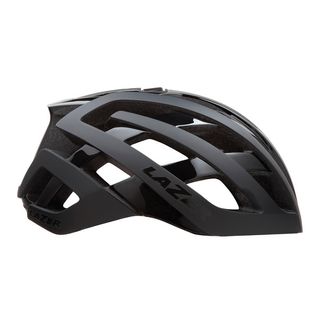
Best lightweight
At just 205g, the G1 Genesis is suitably featherweight but that's not its only attribute. It's comfortable, with an easy-to-use real barrel adjuster to help fine tune the fit. An aero cover is available as an aftermarket purchase.
Read more here

Best aero
Despite its undeniable aero aesthetic, the Ballista can still be used as an everyday road helmet thanks to good ventilation and easy BOA adjustment. It includes MIPS-style technology and is even suitable for riders with ponytails.
Read more here

Best budget
Sitting at the lower end of Kask's range, the Sintesi is a great choice for riders on a bit of a budget. It is suitable for road, gravel and commuting thanks to its non-specific style and it benefits from Kask's own WG11 rotational impact protection for an extra layer of safety.
Read more here

Best all-rounder
A long-term favourite with excellent all-round performance, Giro's Aether definitely deserves consideration. It is light, airy and includes MIPS along with extra reinforcement in its construction. There are loads of colour options to choose from and it's very comfortable to wear.
Read more here
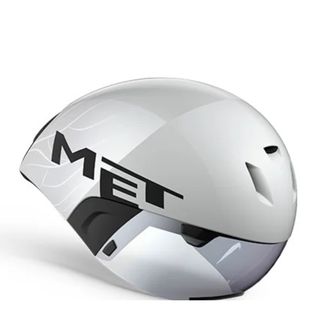
Best TT
A dedicated TT helmet, the Codatronca proved itself to be very comfortable in use with decent ventilation. This, coupled with the stubby aero design, makes it well-suited to sporting courses that entail changes of head and body position to cope with the hills and corners whilst remaining aerodynamic.
Read more here

Best aero all-rounder
Both lightweight and airy for an aero helmet the Ventral also benefits from POC's SPIN tech to better dissipate rotational impacts.

Best ventilation
The Evade promotes better airflow by pairing the large front vents and wide rear vents with MIPS Air Node tech, which is lighter and less obtrusive.

Best lightweight aero
Weighing just 260g in a medium it blends aero properties with plenty of comfort, aided by excellent padding and an adjustable retention band.
Best overall helmet

Giro Eclipse Spherical
Specifications
Reasons to buy
Reasons to avoid
The Giro Eclipse Spherical helmet uses Giro's MIPS Spherical tech, where MIPS forms the filling in a sandwich between two EPS foam layers.
We found the helmet to be really comfortable, with an unrestrictive feel and fit. Airflow was impressive and kept us comfortable even in 35C-plus heat. We also appreciated the little details, which are sometimes missing in other helmets - here the straps fit well without flapping and there's space to insert your sunglasses in the front vents.
Giro claims that the Eclipse is the fastest-ever aero helmet (non TT) - which we aren't able to verify, although our tester did achieve his fastest-ever downhill speed and upped his average overall while wearing it.
Read more: Giro Eclipse Spherical cycling helmet full review
Best lightweight helmet
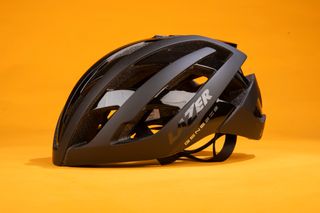
Lazer G1 Genesis
Specifications
Reasons to buy
Reasons to avoid
The featherlight and comfortable Lazer G1 Genesis helmet feels secure when on and boasts a simple, stylish look. To fit your individual head shape the rear barrel retention cradle has a large amount of vertical adjustment, but as with the Lazer Blade+ MIPS Helmet, this doesn't provide much in the way of horizontal adjustment, so not as fine-tuneable as any of the Giro helmet offerings.
That said, we found it to be a really comfortable road bike helmet aided in no small part by it being so lightweight; in fact at 205g for a sized medium on our test scales, it's one of the lightest helmets we've tested, and around 55g lighter than the Giro Helios Spherical MIPS Helmet.
You do need to "shell" out for the additional aftermarket aero layer, it's not a big outlay, and if you want to harness the helmet's go-faster properties, it's a minimal weight penalty, and help make it a very lightweight, aero-specific road bike helmet.
Read more: Lazer G1 Genesis cycling helmet full review
Best aero helmet

Trek Ballista MIPS bike helmet
Specifications
Reasons to buy
Reasons to avoid
Trek has revamped its racing helmet lines, with the aero Ballista MIPS now including MIPS Air sliding plane tech which doesn't need a separate internal liner. It's an interesting-looking design, with its dropped tail.
It's tightened with a wire and BOA dial system at the rear, which gives a secure, stable fit. There's low profile padding and the straps are soft and easy to adjust.
On the bike, we were impressed by the airflow as well, which works better than some more obviously vented helmets, despite there only being two front-facing vents. We also rated the ponytail-friendliness, although adjusting the cradle height at the rear is a little fiddly.
Read more: Trek Ballista MIPS bike helmet full review
Best budget helmet
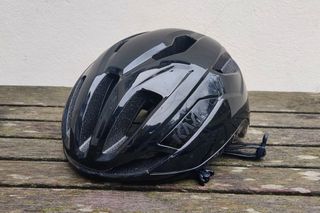
Kask Sintesi is a lightweight offering, weighing just 230g in a size medium
Specifications
Reasons to buy
Reasons to avoid
Kask designed the Sintesi to be a single, mid-priced helmet that worked as well for recreational road cyclists, commuters and gravel riders. It comes in a wide range of colors and is affordably priced.
Kask uses its Ergo Fit retention system, which allows wide vertical and circumference adjustment of the rear of the cradle, allowing two sizes to suit most head sizes, and there is a comfortable synthetic leather chin strap. Rather than an additional layer like MIPS, Kask uses the WG11 protocol to test its helmets for rotational impact protection.
On test, we found that the Sintesi provided good airflow and kept our head cool, although the 13 vents don't offer anywhere to perch a pair of glasses.
Read more: Kask Sintesi helmet full review
Best all-rounder

Giro Aether MIPS helmet
Specifications
Reasons to buy
Reasons to avoid
An absolute favourite road bike helmet for us is the Giro Aether MIPS. On test we called it a game-changer of a road bike helmet due to its unrivalled all-around performance.
During the review period, we found this helmet to be exceptional in its ventilation ability and at the cutting edge for safety features. While there are slightly lighter helmets, such as the Kask Protone helmet, it was still an impressively low weight at just 269g (for a size small).
Packaged in a sleek-looking design, with lots of colors to choose from, it's really easy to wear for any style of riding making it all-round the best road bike helmet out there. In fact, we loved the Giro Aether MIPS so much, that we gave it a five out of five stars and a Cycling Weekly Editor's Choice Award. The only reason why you wouldn't want to buy it is if your head fundamentally didn't fit any of the size options.
Read more: Giro Aether MIPS helmet full review
Best TT helmet

MET's Codatronca features a short tail making it a versatile offering
Specifications
Reasons to buy
Reasons to avoid
With its short tail, the MET Codatronca has an advantage which makes it a more versatile time trial helmet for most riders. Riders will still get significant aero gains but without having to worry that they are always in a perfect optimum "turtle" position - this is particularly relevant when faced with sporting courses.
We found it was a very comfortable lid, which provided a close fit with Met's 'Safe-T Orbital' fit system with retention dial. It also had sufficient ventilation thanks to its three small vents on the front and further two 'exhaust' holes at the rear - included to channel air out the back. It has a clever magnetic visor system, but bear in mind the visor is quite long and therefore may take some time to get used to.
It's got a rather large price tag, but it's well in keeping with the likes of the Giro Aerohead MIPS helmet, so seems about right.
The only downside is that Met helmets aren't currently available in or allowed to ship to the US.
Read more: MET Codatronca full review
Best aero all-rounder

POC Ventral Spin helmet
Specifications
Reasons to buy
Reasons to avoid
On test we absolutely loved the POC Ventral Spin, finding it one of the best road bike helmet for aerodynamic features without sacrificing breathability.
Its large air ports mean that it also doesn't take the usual guise of an aero helmet, which tend to have a more solid appearance. The aero lid uses POC's own SPIN (Shearing Pad INside) safety feature, which combines silicone bladders and pads to help dissipate rotation impacts.
While seemingly superficial, anyone who has ridden with an aero lid will know the challenge of trying to stow sunglasses when they're not on your face. The fully wrapped EPS POC Ventral SPIN however includes sunglass grippers. They're meant to be best compatible with POC's own brand sunnies, but we teamed the helmet with a whole host of brands and found them to hold tight to every single pair.
Read more: POC Ventral SPIN cycling helmet full review
Best ventilation

Specialized Evade 3
Specifications
Reasons to buy
Reasons to avoid
Now in its third iteration, the Specialized S-Works Evade 3 helmet improves on its predecessors with better airflow and comfort, without sacrificing aerodynamic slipperiness.
It comes with larger front vents and a drag-defeating "diffuser" with wide vents at the rear. Specialized has also made the straps thinner, used a standard buckle and included MIPS Air Node, which is integrated into the internal padding, making it less intrusive than the more normal plastic liner.
The helmet is compatible with the ANGi crash sensor, although Specialized doesn't include this.
We found the Evade 3 comfortable even on hot, dry summer rides and comfortable, if a little narrow on the sides. The narrower straps generated less wind flap too.
Read more: Specialized S-Works Evade 3 full review
Best lightweight aero

Kask Utopia Y bike helmet
Specifications
Reasons to buy
Reasons to avoid
Combining aerodynamics with aesthetically pleasing looks and improved comfort, we found the recently revised Kask Utopia Y helmet to be one of the best road bike helmets.
Despite its closed-off silhouette, the deep channelling and vents under the brow keep your noggin cool and your sunglasses free of sunscreen-infused sweat. You can adjust the retention band down to the millimetre, giving the helmet an excellent snug - yet comfortable - fit. This comfort is further boosted by the addition of thick interior padding, which is very soft against the skin.
Weighing in at only 260g in a size medium, the Utopia Y is also impressively light, especially for an aero road helmet - we found that it really did disappear on our head once we'd strapped it on.
Unlike some other aero lids, the Utopia Y is not bulky looking, and it also comes in a wide range of nine colors so you'll be able to find a look that suits your individual style or matches your bike.
Read more: Kask Utopia Y cycling helmet full review
HONORABLE MENTIONS

Specifications
Reasons to buy
Reasons to avoid
It’s likely you’ll regonise the Protone from its days as the chosen lid for the Ineos WorldTour team. This however is the updated version, which retains a pretty similar shape to the original but adds a few new features.
It’s now equipped with a more robust internal frame that’s designed to prevent the helmet from breaking into pieces upon impact. There’s also a reflective insert at the rear for a little added visibility.
To keep you cool, the Icon boasts 20 vents and a removable Coolmax lining. To secure the helmet it relies on Kask’s Octofit+ system that has a vertical stabliser that sits on the nape of your neck and is adjusted with a large rubber dial. We managed to dial in a comfortable fit without issue, while the dial allowed us to make a few mid-ride adjustments even while wearing gloves.
At 232 grams, it’s a light lid that feels good on the head. During testing the padding did a decent job of absorbing sweat, while the vents allowed for just the right amount of airflow - enough to keep you cool but not to the point where we became too cold on descents.
Read more: Kask Protone Icon full review

Lazer Vento KinetiCore road bike helmet
Specifications
Reasons to buy
Reasons to avoid
The Lazer Vento is designed as an aero helmet, so ventilation is somewhat sacrificed for speed. That said, this helmet still compares very favourably to other aero helmets with regards to keeping your head cool. Although we couldn’t test the aerodynamic qualities of this against other helmets, it did feel fast when putting our head down and throughout the test loops we did.
The helmet looks rather good too, having quite a low profile and not being too bulbous. It was also very comfortable and the new retention system is a massive improvement on Lazer’s previous design – although still not as easy to use as a regular dial. However, this new system does promise to be ponytail-friendly. The glasses port, sadly, is not particularly good as it is too wide to accommodate most sunglasses.
The helmet is definitely towards the more expensive end of the market and is also not the lightest at 291g for size medium. However, the weight is not something that we noticed when wearing it.
Read more: Lazer Vento KinetiCore helmet full review

Smith Ignite bike helmet
Specifications
Reasons to buy
Reasons to avoid
Comfortable, undoubtedly slippery through the air and packed to the rafters with safety features including Koroyd (the plastic straw looking impact absorption feature) and helmet safety gold standard MIPS, the Smith Ignite helmet is right up there with the safest road bike helmets on the market.
It has Smith's VaporFit retention system, which can be adjusted vertically and horizontally to allow for a snuggly fit for all head shapes, which is a rare feature, especially in aero-focused helmet options.
Smith's Ignite should certainly be a first choice helmet for those riders looking for an aero advantage without the drawbacks, although we found that the matt finish tends to look a little grubby quite quickly - so no chucking in the kit bag post-ride if you want to keep it looking shipshape for as long as possible.
Read more: Smith Ignite cycling helmet full review
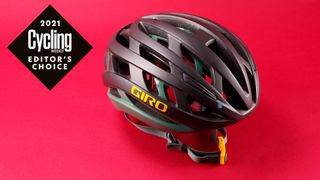
Giro Helios Spherical MIPS helmet features MIPS technology
Specifications
Reasons to buy
Reasons to avoid
We absolutely loved the Giro Helios Spherical MIPS helmet finding it to be the best do-all helmet out there.
Bridging the gap between road and off-road adventures, the lightweight helmet uses the same Spherical MIPS protection as the Giro Aether, which isn't the only way this lower price offering challenges its more expensive sibling.
There's also a 10-gram weight, saving to be had on a like-for-like size, with the brand putting this weight saving down to the Helios Spherical helmet having less technical ventilation structure than the Aether. I found it a barely noticeable difference having ridden both helmets, with the two equally as comfortable as each other.
The only thing it does lack is an eyewear doc feature; we struggled to find suitable holes to pop sunglasses arms through, but if you're looking for a great value all-rounder option, then this is one of the best road bike helmets out there.
Read more: Giro Helios Spherical MIPS cycling helmet full review

The Specialized S-Works Prevail 3 is designed for optimal ventilation
Specifications
Reasons to buy
Reasons to avoid
Specialized's updated S-Works Prevail 3 helmet is designed to be both airier and safer than the outgoing model.
By using its Air Cage design, it's been able to strip down the usual foam bridges to help increase ventilation by almost 25% when compared to the Prevail 2 without compromising safety. Essentially the cage design acts like a suspension bridge, distributing the forces of an impact across the entire helmet.
The Prevail 3 also uses MIPS AirNode, which integrates the MIPS system, designed to protect against rotational forces during a crash, directly into the helmet padding to reduce weight and improve ventilation.
We found that the large vents did their job with great success. Even when temperatures hit 32 degrees centigrade the air flow through the helmet kept our head cool.
At 280 grams, the S-Works Prevail 3 is light but certainly not the lightest in class, but for those who ride often in hot climates the supreme ventilation is likely to make it worthy of consideration.
Read more: Specialized S-Works Prevail 3 full review

Bell's XR Spherical MIPS helmet boasts 14 vents for improved airflow
Specifications
Reasons to buy
Reasons to avoid
Bell's XR helmet is aimed at cyclists who like to ride both on and off-road and require a helmet to cover both terrains.
To achieve this the XR uses a compact shape that's well-vented, with 14 large vents that allow for plenty of airflow. The inner shell extends further down the back of the head than regular road lids, something which gravel riders will appreciate.
Other safety features include the Spherical MIPS system, with the outer and inner shell capable of moving independently during an impact. The idea here is to better protect against rotational impacts, while the outer shell can absorb glancing blows.
The XR uses Bell's Float Fit system, which we found simple to use and is paired with a comfortable strap and magnetic buckle. Combined, they allow for a stable fit that we found added to the helmet's high level of comfort - as did the great ventilation.
Perhaps due to the extra protection, the Bell XR isn't the lightest in class - a medium has a claimed weight of 285g while our large test helmet tipped the scales at 317g.
Read more: Bell XR Spherical MIPS cycling helmet full review

MET's Rivale road helmet features MIPS technology
Specifications
Reasons to buy
Reasons to avoid
The MET Rivale MIPS combines aero and ventilation features for an all-road road helmet. It has 18 vents which are predominately at the front to keep the air flowing. The shaping of the vents at the back and a more enclosed rear keep the drag low. Whilst we can't vouch for the added watts this design certainly does provide really good airflow through the helmet in our experience.
The Rivale also has a MIPS liner for added safety. We found the fitting system to be effective and comfortable with a good amount of adjustability.
On the scales it's pretty similar to some of our other lightweight helmets, coming in at 242g for the medium. What's different from lots of other helmets in this guide is the price, it's a good bit cheaper than many of its competitors.
Read more: MET Rivale MIPS full review
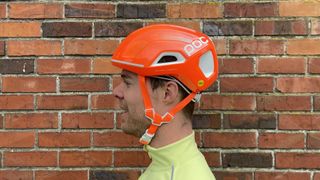
Specifications
Reasons to buy
Reasons to avoid
The POC Ventral Tempus helmet is designed for riding in dark, wet conditions - you can tell that POC is based in Sweden. It's based on POC's helmets for warmer climes, but with an enclosed shell design, an orange colorway and added 360° visible reflective details
There's a new MIPS iteration that's more comfortable than the original version and the helmet has a compact shape that fends off the weather without overheating.
We found it comfortable for cooler weather riding and the enclosed design does work in the rain although the slightly bulky shape might not suit everyone. Certainly, if you're riding regularly in a colder region, or commute year round, then it's a lid we suggest you take a look at.
Read more: POC Ventral Tempus MIPS helmet full review

Giro's Aerohead Ultimate TT helmet offers an impressive field of view
Specifications
Reasons to buy
Reasons to avoid
The wind-cheating silhouette of the Giro Ultimate Aerohead will maximise your performance with its excellent aerodynamic design which also boosts plenty of ventilation with its four Wind Tunnel vents. Don't by any means expect it to be highly breathable though.
On test, we actually used the even more aerodynamic Aerohead Ultimate, but with the same fit, it is an almost like-for-like comparison, and we are confident when saying this version is still one of the best road bike helmets in the time trial category.
It's rare to find a time Trial / track helmet that not only offers MIPS but also an impressive field of view, thanks to the wrap-around eye shield made by ZEISS Optics. The shield is kept secure with a magnetic anchor attachment and it can also be stored in a flipped-up position.
Read more: Giro Ultimate Aerohead MIPS full review

Specifications
Reasons to buy
Reasons to avoid
The Cytal is designed to be a range-topping, highly-vented aero helmet. Its extremely high price tag takes care of the first, while its supersized vents and a carbon wing handle the latter.
The aforementioned wing is inserted through the EPS across the top of the helmet. POC says it helps to improve the helmet aerodynamically, while also aiding ventilation and safety; the wing keeps the front of the helmet open, without compromising its structural integrity.
Rather than directing air around the helmet, the design directs it through it. Certainly during testing it was clear that a lot of air was passing through the large front vents and over the top of our head. There are also deep internal channels that help to funnel the air through and out the rear exhausts. Riding in 20˚c temperatures our head was kept nice and cool, with a good amount of airflow to the forehead to reduce a build up of sweat. When it got a little hotter we opted to use the supplied brow padding for additional absorption.
With regards to comfort, the adjustment system allowed for an optimal fit, with no pressure points at all. As for the carbon wing, it’s tricky to tell if its desired performance gains are achieved. Certainly it does a good job of keeping the lid open to aid ventilation, and it’s clear how it would help to keep the helmet in one piece during an impact - there’s no MIPS system here but the Cytal still gets top marks from the independent tester, Virginia Tech. As for the aero claims, it’s much harder to quantify, but the movement of air through the helmet felt clean at least.
Read more: POC Cytal full review

Specifications
Reasons to buy
Reasons to avoid
Taking its design cues from the iconic Aeon helmet, the Cielo seeks to deliver plenty of performance at a friendly price point.
It features 22 vents along internal channels, and like the Aeon of old, has a compact look, short in length but with that familiar wide profile at the front.
To keep the price down it relies on straightforward MIPS Evolve Core liner rather than the Spherical ‘ball and socket’ design used in Giro’s more expensive lids. It all adds up to 295 grams on our scales for a size small - fairly heavy for a road helmet.
On the head, the Cielo is nicely padded, resulting in plenty of comfort, especially across the forehead. The straps fit closely to the head, which again aids comfort, while the rear adjustment dial is a good size and easy to use.
During testing the level of ventilation was just right. We wore it in warmer conditions as well as rain and it remained comfortable in both scenarios. The aforementioned weight is noticeable , but as it’s likely down to the MIPS liner and the internal safety harness, it is more than justified.
Read more: Giro Cielo full review

21. Specialized Search
Specifications
As its name implies, the Search is designed as an adventure-focussed gravel helmet. Specialized has opted to place a premium on ventilation, and certainly it’s home to some of the largest vents we've seen yet on a gravel lid.
Using trickle-down tech from the brand’s more expensive S-Works racing helmets, the Search benefits from what’s called 4D Brow Cooling. In essence it uses a gap between the helmet and the forehead to direct airflow into the internal channels, and then from here to the large exhaust ports at the rear, where it exits.
Other features include MIPS technology. Here, it’s theEvolve Core Solution, which is a low-friction layer that allows a sliding motion of 10 to15mm in all directions during impacts. There’s also storage for your sunglasses, which uses some hidden rubber flaps to prevent them from rattling around - a nice detail for a helmet that’s aimed primarily at off-road riding.
Claimed weight for a medium is 290g in Europe and 300g in the US due to the differing standards required.
Meet the testers

Originally from The Netherlands, Anne-Marije started bike racing in her early twenties while living in Seattle, WA alongside working as a bike messenger. Strengthened by the many miles spent darting around Seattle's hilly streets on a steel single speed, her progression in the sport was a quick one. As she competed at the elite level, her journalism career followed, and soon she became a full-time cycling journalist, a career she's now had for 11 years.
Rachel has been writing about and reviewing bike tech for the last 10 years. While her first riding love is mountain biking ,where she's been European and UK 24hr Champion on more than one occasion, she's not just confined to the trails and regularly rides - and occasionally races - on gravel and road too.
Buyer's guide to choosing the best road bike helmets
What is the safest road bike helmet?
The primary function of a cycling helmet is to protect your head - and all helmets will meet the minimum standards set out by the safety authority in the country of sale.
If you choose to spend more, the helmet won't necessarily be safer but instead may be lighter, and more breathable. The retention system often becomes more comfortable and adjustable on a more expensive helmet too.
A recently developed safety system called MIPS, Multi-directional Impact Protection System, will often be referred to when discussing the level of protection provided by a helmet. It's considered the industry gold standard and you can read all about it below.
If you're looking specifically to save some money then you might want to check out our guide on the Best cheap and budget friendly bike helmets to get the best without breaking the bank.
If you have a budding bike rider in your life then our guide to the Best kids' bike helmets will give you all the important information for how to help you keep their heads safe when riding.
How do I know if a helmet is safe?
Always check that the helmet you are buying is tested to the standard relevant to where you live: CPSC for the US, EN 1078 sticker for the UK, and Europe.
This means that the helmet has passed several tests that look at the helmet's construction, field of vision, impact absorption, retention system, chin strap and buckle. In order to ride in races, sportives, gran fondos and triathlons it is often a requirement to have a helmet that adheres to the relevant local standard.

Tom Dumoulin at the 2020 Tour de France (Photo by Stuart Franklin/Getty Images)
What is MIPS and do I need it?
In recent years, we've seen more and more bike helmet brands adopt MIPS. MIPS stands for Multi-directional Impact Protection System; MIPS is actually a brand in itself, and helmet providers using it build the layer into their own helmets. Some brands like Bontrager have their own similar systems.
The MIPS liner is designed to reduce rotational forces on the brain that can occur in the event of a crash. It creates a slip plane to mimic and amplify the brain's protection system to minimize the force transmitted to the brain in the event of an impact.
Helmets with MIPS layers often cost a little more - but there is some evidence to suggest the layer is effective in reducing injury in certain types of crashes.
How should a road bike helmet fit?
How to measure for a helmet and make sure it fits your head.
If a helmet doesn't fit properly then it will not do the job it is designed for. Helmets are often available in different sizes relating to the circumference of your head.
All helmet manufacturers will have a size guide on their websites, and we highly recommend following each brand's recommendations of how to measure for its helmets before investing in a purchase.
If you are measuring at home, place the tape measure about 25mm (roughly two fingers width) above your eyebrows, and as you wrap it around your head, make sure that it's about 15mm above the top of your ear (about a thumb width) ensuring that you measure around the widest part of your head at the back - think cap, not bonnet.
If you aren't confident in doing this, then pop into your local bike shop to get them to help you do this. This also gives you the chance to try before you buy to check for comfort.
You are going to be wearing the helmet a lot, potentially for many hours at a time, so it's imperative that the fit suits your particular head shape, no matter what a review says. It is also advisable to try on a variety of makes and models to see which is most comfortable and the best road bike helmet for you, as they are often different shapes internally. You may find pressure points on a helmet even if it's technically the right size for you.
Some helmets are women's specific and even feature a special gap to allow for a ponytail, such as Specialized's Hair Port system. However, most helmets are unisex and will fit both men and women.

The best road bike helmets come with practical design features such as a ponytail port
Can I adjust the size of a road bike helmet?
Yes. A retention system is used to adjust the fit of the helmet to your specific head size. These are commonly adjusted by a dial or some kind of ratchet system. The best road bike helmets can be operated with a single hand, which is useful for making slight adjustments on the move.
It should be possible to loosen the retention system on a helmet to allow for a thermal skull cap or cycling cap to be worn underneath. This is done for added warmth, and the bill of a cycling cap can be useful for deflecting rain from the eyes. Because of this, caps are a common sight in the spring classics, such as Paris-Roubaix. If when you try on a helmet the retention system is at either end of limit, it is probably the wrong size for you.

Even in an aero helmet, the rear cradle should allow lots of adjustability
Should a road bike helmet feature padding?
Yes. Padding makes a helmet more comfortable but also helps to wick sweat away from your head. An ideal road bike helmet design will feature padding that can be removed for washing and replacement. The style and thickness of padding varies between helmets, so again, it's worth trying a few models on to see which works the best for you.

The best cycling helmets come with removable padding so they can be washed.
Should a road bike helmet be vented?
Vents are holes in the shell of the helmet. They have two functions – to reduce the weight of the helmet, and also to add ventilation. Helmets with fewer or no vents are usually considerably warmer, though the latest crop of aero lids has shown the value of well-designed internal channelling. This might not be obvious when you try one on in a shop, but once you start working up a sweat climbing a big hill when hot weather cycling, it becomes invaluable.

Helmet designs need to balance airflow and aerodynamics
Is a lighter road bike helmet better?
As is common with cycling kit, as weight decreases price tends to increase. The best road bike helmets will be lightest in their given category, making them the most comfortable option because they place less strain on your neck.
If you're a competing cyclist the other advantage of a lighter helmet is increasing your power-to-weight ratio, 50g might not make much difference to most of us mortals, but to a top professional looking for any marginal gain, it becomes significant.
When should I replace a road bike helmet?
Is it only after an impact or do road bike helmets expire?
If you suffer the misfortune of falling off your bike and taking a head impact, the chances are that the damage to your helmet will be visually obvious, leaving no question about the need to replace it.
However, it's really important that even the best road bike helmets are replaced even if it looks like just a minor scuff on the outer casing. This is because the integrity of the EPS, and other safety features which are designed to absorb the impact are highly likely to have been damaged by doing their job perfectly. This means that the next time you crash, there won't be anywhere for the energy to go, making a head injury more likely.
While the EPS foam in a bike helmet won't just deteriorate with age, it's over that time span that it will suffer with minor knocks and bumps from being stored, dropped from handlebars or popped in a kit bag. The aggregation will add up to volume loss and require a new helmet to be purchased.
It's for this 'EPS volume loss' reason that most helmet manufacturers will also recommend replacing a road bike helmet every three to five years.
Over this time frame, it's also likely that it will be exposed to a lot of UV rays, which can weaken the plastic shell of a helmet too, compromising its safety.
Extreme temperatures can affect the plastic shell too, and while the safety standards will mean it's been tested to the unlikely riding conditions which are as high as around 122°F / 50°C, and as low as -4°F/ -20°C, it could be more likely in places that you store your helmet.
So bear these facts in mind when not wearing your road bike helmet, and doing things like using a case when not wearing it, not storing it in the window with the sun directly on it or in the shed in a really cold winter.
How we test
Where we've been able to link to a review, it means that we've put the head protection through its paces. All of the members of the Cycling Weekly Tech Team have years of experience in riding bikes in all disciplines and have a huge wealth of knowledge and wear helmets almost every time we ride.
We know that what might not fit one of us, might fit another team member better, meaning that this best road bike helmets buyers guide has depth and breadth in terms of recommendations.
Where we haven't yet had the chance to review an item, we're still confident in recommending it as one of the best, because we either know the brand well, and have probably tested another product or the previous version and can still happily recommend it.
Get The Leadout Newsletter
The latest race content, interviews, features, reviews and expert buying guides, direct to your inbox!
Hannah is Cycling Weekly’s longest-serving tech writer, having started with the magazine back in 2011. She has covered all things technical for both print and digital over multiple seasons representing CW at spring Classics, and Grand Tours and all races in between.
Hannah was a successful road and track racer herself, competing in UCI races all over Europe as well as in China, Pakistan and New Zealand.
For fun, she's ridden LEJOG unaided, a lap of Majorca in a day, won a 24-hour mountain bike race and tackled famous mountain passes in the French Alps, Pyrenees, Dolomites and Himalayas.
She lives just outside the Peak District National Park near Manchester UK with her partner, daughter and a small but beautifully formed bike collection.
-
 Trusted by the likes of Chloé Dygert, Lionel Messi, Alex Ovechkin & LeBron James – the Wattbike Atom has $600 off this Black Friday
Trusted by the likes of Chloé Dygert, Lionel Messi, Alex Ovechkin & LeBron James – the Wattbike Atom has $600 off this Black FridayDeals Save $600 on the Wattbike Atom at its lowest price of the year in this early Black Friday deal
By Paul Brett Published
-
 ‘I want to get back on the bike but I’m terrified’: After being hit by three drivers, one cyclist has had enough
‘I want to get back on the bike but I’m terrified’: After being hit by three drivers, one cyclist has had enoughA third crash left one rider with a broken back and a long time off the bike
By Adam Becket Published